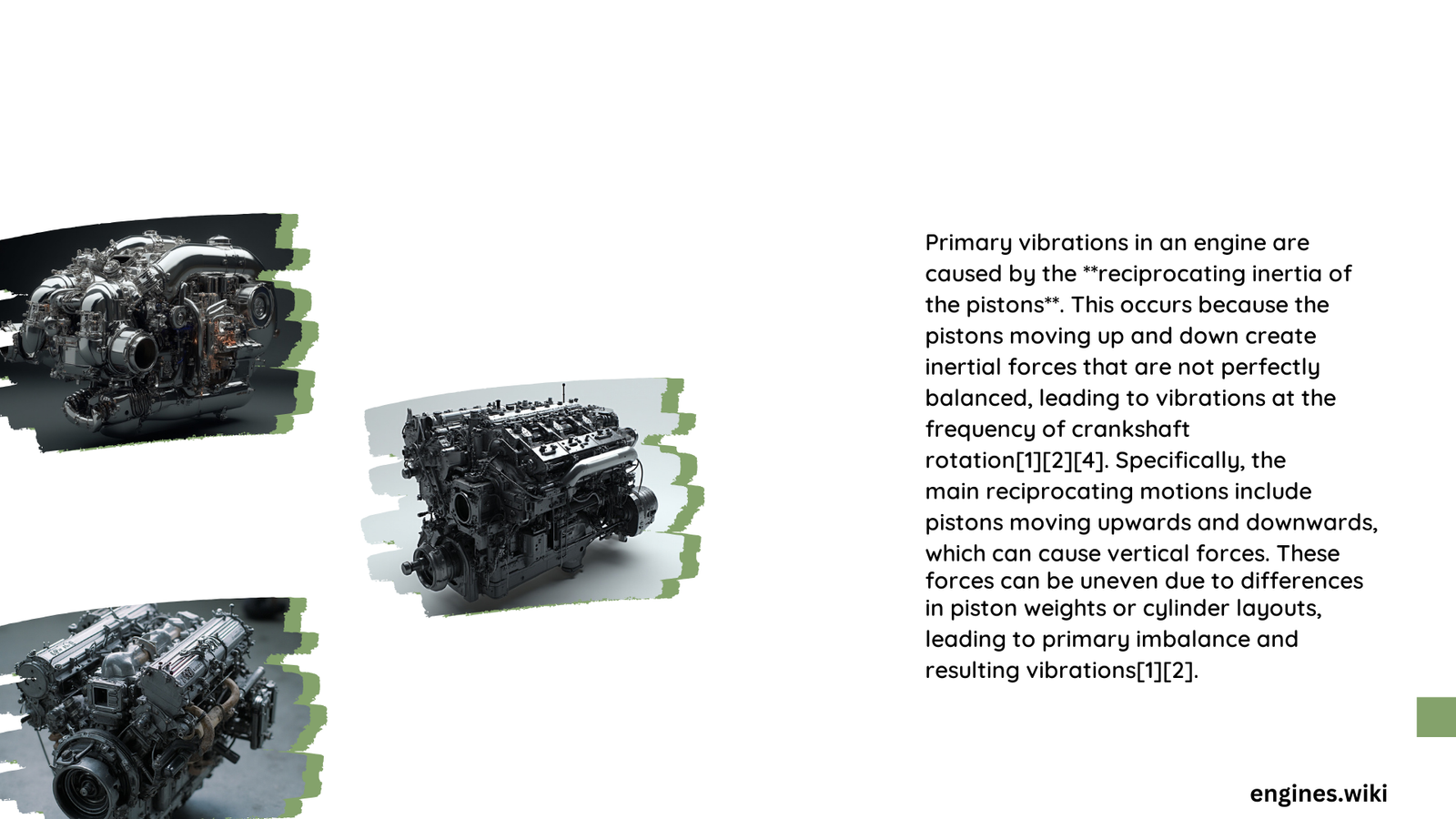Primary vibrations in an engine can stem from various sources, including engine imbalance, crankshaft design, firing order, and inadequate vibration dampers. These factors interact in complex ways, affecting the engine’s overall performance and longevity. Understanding these causes is crucial for diagnosing and mitigating engine vibrations, which can lead to improved engine efficiency, reduced wear and tear, and enhanced driving comfort.
What Are the Main Contributors to Engine Vibrations?
Engine vibrations are an inherent part of internal combustion engines, but excessive vibrations can indicate underlying issues. The primary causes of engine vibrations include:
- Engine Imbalance
- Crankshaft Design
- Firing Order
- Vibration Dampers
Let’s delve into each of these factors to understand their role in causing primary vibrations in an engine.
How Does Engine Imbalance Affect Vibrations?

Engine imbalance is a significant contributor to primary vibrations. It can occur due to:
- Uneven weight distribution of rotating components
- Misalignment of engine parts
- Wear and tear of engine components
Types of Engine Imbalance
| Type | Description | Impact on Vibration |
|---|---|---|
| Static Imbalance | Uneven weight distribution in a single plane | Causes radial vibration |
| Couple Imbalance | Uneven weight distribution in two planes | Results in rocking motion |
| Dynamic Imbalance | Combination of static and couple imbalance | Produces complex vibration patterns |
Engine imbalance can lead to:
- Increased wear on bearings and other components
- Reduced engine efficiency
- Potential engine damage if left unchecked
What Role Does Crankshaft Design Play in Engine Vibrations?
The crankshaft is a critical component in engine design, and its configuration significantly influences vibration characteristics. Key aspects include:
- Crankshaft geometry
- Material selection
- Counterweight design
Crankshaft Design Considerations
- Throw Arrangement: The arrangement of crankshaft throws affects the balance of forces within the engine.
- Counterweight Placement: Proper placement of counterweights can help offset imbalances.
- Material Properties: The choice of material affects the crankshaft’s natural frequency and damping characteristics.
How Does Firing Order Influence Engine Vibrations?
The firing order of an engine plays a crucial role in determining vibration patterns. It affects:
- Distribution of power pulses
- Balance of forces within the engine
- Overall smoothness of operation
Firing Order Considerations
- Even Distribution: A well-designed firing order distributes power pulses evenly throughout the engine cycle.
- Force Balancing: It helps in balancing the forces generated by each cylinder’s combustion.
- Vibration Reduction: Proper firing order can significantly reduce primary vibrations.
What Is the Impact of Vibration Dampers on Engine Performance?
Vibration dampers are essential components designed to mitigate engine vibrations. They work by:
- Absorbing and dissipating vibrational energy
- Reducing stress on engine components
- Improving overall engine smoothness
Types of Vibration Dampers
- Harmonic Balancers: These combine a rubber damping element with an inertia ring to absorb torsional vibrations.
- Viscous Dampers: Use a viscous fluid to dissipate vibrational energy.
- Tuned Mass Dampers: Employ an additional mass to counteract specific vibration frequencies.
How Can Engine Vibrations Be Diagnosed and Mitigated?
Diagnosing and addressing engine vibrations involves several steps:
- Vibration Analysis: Using specialized equipment to measure and analyze vibration patterns.
- Visual Inspection: Checking for signs of wear, misalignment, or damage.
- Component Testing: Evaluating individual components for proper function.
Mitigation Strategies
- Balancing: Ensuring proper balance of rotating components.
- Alignment: Correcting any misalignments in the engine assembly.
- Component Replacement: Replacing worn or damaged parts that contribute to vibrations.
- Damper Installation: Adding or upgrading vibration dampers as needed.
What Are the Long-Term Effects of Unaddressed Engine Vibrations?
Ignoring persistent engine vibrations can lead to:
- Accelerated wear of engine components
- Reduced fuel efficiency
- Potential catastrophic engine failure
Preventive Measures
- Regular maintenance and inspections
- Prompt addressing of any unusual vibrations
- Using high-quality components and lubricants
By understanding and addressing the causes of primary vibrations in an engine, manufacturers and vehicle owners can ensure better performance, longevity, and driving comfort. Regular monitoring and maintenance are key to preventing vibration-related issues and maintaining optimal engine health.
References:
1. Engine Balance – Wikipedia
2. The Most Popular Causes Of Car Engine Vibration – Newparts.com
3. Engine Bay Vibration: Causes, Solutions, and the Role of Dynamic Engine Mounts – Dickerson Auto
